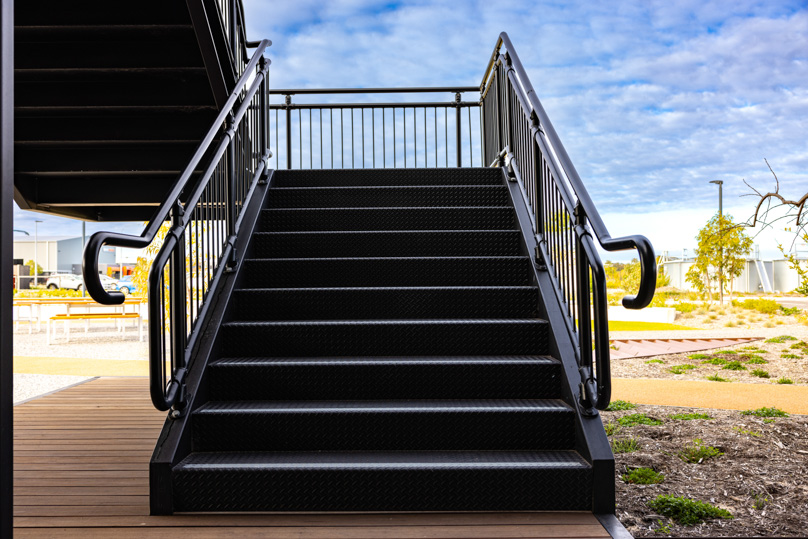AS1428 has played a crucial role in shaping balustrade and handrail designs to provide accessibility and mobility for people with disabilities in Australia. This standard outlines minimum design requirements for new building work, with a focus on continuous accessible paths of travel. AS1428 guides designers specifying disability ramps, wheelchair circulation spaces, stairways and access for individuals with various disabilities, including those who use wheelchairs, have ambulatory disabilities, or have sensory impairments.
Initially introduced as part of AS CA52.1—1968, then revised and redesignated as AS 1428—1977, this standard has continuously adapted to meet the evolving needs of individuals with disabilities. The latest revisions in 2021 signify a commitment to staying current with advancements in accessibility and mobility, shaping balustrade and handrail designs from Moddex that we know and trust.

The Origins & Evolution of Moddex Assistrail® Disability Handrails
As the Assistrail® Disability Handrail system was conceptualised and brought to the market, Moddex prioritised a meticulous alignment with AS1428 standards. Every element of the design, from dimensions to materials, was carefully chosen to ensure compliance with the standard’s requirements. This commitment to adherence forms the foundation of the Assistrail® system, creating a product that not only meets but exceeds the expectations set by AS1428.
What sets the Assistrail® Disability Handrail system apart is the fusion of modular adaptability and its innovative aesthetics. Recognising that accessibility should not come at the cost of design appeal, Moddex has seamlessly integrated the functional aspects required by AS1428 with a modern and visually appealing aesthetic. The Assistrail® system adds a touch of sophistication to spaces, proving that accessibility and aesthetics can coexist harmoniously.
Understanding the diverse needs of individuals with disabilities, Assistrail® Disability Handrail is available in a range of configurations that cater to specific project requirements. Whether it’s a straight run, curved installation, or a combination of both, the Assistrail® system provides versatility without compromising on safety, compliance or accessibility. No matter what application, compliance is always achievable with Moddex. This commitment to functionality positions the Assistrail® system as the top choice for designers seeking a modular Disability Handrail solution that not only meets the standard but adapts to the unique demands of each project.
Ultimate Guide to Handrail & Balustrade Compliance eBook
Looking for more compliance information for handrails and balustrades? The Moddex Ultimate Guide to Handrail & Balustrade Compliance eBook is a comprehensive resource designed for architects, designers, and industry professionals.
This downloadable guide covers essential handrail requirements under prominent standards such as AS 1428, AS 1657, Austroads Guide to Road Design Part 6A, and NCC 2022 Volume 1 Part D3, providing a summary of compliance regulations. The eBook also offers practical design tips for disability ramps, handrail terminations on ramps, circulation spaces for wheelchair turns, and considerations for ramp location to prevent protrusion at property boundaries.
Additionally, it addresses the complexities of designing ramps that return or double-back and delves into specific requirements for kerbrail ramps under AS 1428. The section on stairs provides insights into stairway location, handrail extensions at internal corridors, substrate requirements on stairs, and compliant handrail positioning on intermediate landings.
The eBook further explores handrail compliance in diverse scenarios, including Class 9B buildings used as primary schools and early childhood centres, as well as requirements for step-type ladders under AS 1657. Overall, this guide serves as a comprehensive and user-friendly tool, offering both summaries of key standards and practical design tips to facilitate compliance and promote the creation of safe and accessible built environments.

